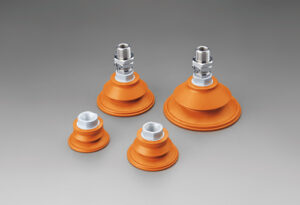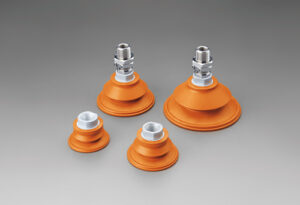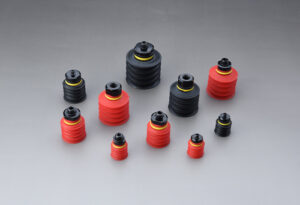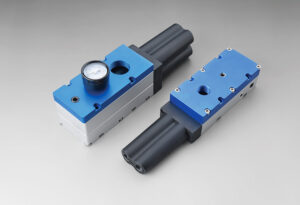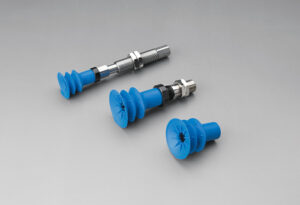Introduction
Vacuum generators create a vacuum or negative pressure in a system. They play an essential role in automated systems by providing suction or holding force for objects. Without vacuum generators, many automated processes would not be possible.
Importance of Troubleshooting
Troubleshooting common problems with vacuum generators is essential for users because it ensures the system functions correctly and efficiently. Problems with vacuum generators can result in reduced suction power, leaks, excessive noise, overheating, and incorrect sizing or selection. These problems can lead to decreased productivity, increased maintenance costs, and potential safety hazards.
By troubleshooting common problems, users can identify and correct issues before they become more serious. Vacuum generators should be serviced and inspected on a regular basis to avoid difficulties in the first place.
Vacuum generators are essential components in many automated systems, and troubleshooting common problems is necessary for users to ensure the proper and efficient functioning of the system. Regular maintenance and inspection can also prevent problems from occurring.

Common Problems with Vacuum Generators
Vacuum generators are subject to several common problems that can affect their performance and cause issues in automated systems. This section will discuss some of these problems and their potential causes.
1.Loss of Suction Power
Loss of suction power is a common problem with vacuum generators that can occur for several reasons. A clog in the system, which can be caused by dirt or other material impeding the airflow, is a common cause. Worn parts, such as filters or seals, can also lead to a loss of suction power. Incorrect settings or insufficient airflow or pressure can also be contributing factors.
2.Leakage
Leakage is another common problem with vacuum generators. This can occur when seals or connections are damaged, allowing air to escape the system. Leakage can also be caused by incorrect installation or incompatible components.
3.Excessive Noise
Excessive noise is a problem that loose or worn parts, such as valves or fittings, can cause. It can also be caused by improper installation or faulty components. Excessive noise can indicate potential safety hazards and should be addressed promptly.
4.Overheating
Overheating is a problem that can be caused by blocked air vents or damaged components. Overheating can lead to decreased suction power and potential safety hazards.
5.Incorrect Sizing or Selection
Incorrect sizing or selection is a common problem with vacuum generators, leading to decreased efficiency and performance. Choosing the wrong size or type of vacuum generator for a particular application can reduce suction power and increase maintenance costs.
Vacuum generators can experience several common problems affecting their performance and efficiency. By understanding the potential causes of these problems, users can take steps to identify and correct issues before they become more serious. Regular maintenance and inspection can also prevent problems from occurring in the first place.
Specific Troubleshooting Tips for SMC Vacuum Generators and Pneumatic Vacuum Generators
1.SMC Vacuum Generators
SMC vacuum generators are widely used in automated systems and can experience some common problems we discussed earlier. Here are some specific troubleshooting tips for SMC vacuum generators:
- Checking Air Flow and Pressure: Ensure that the airflow and pressure are at the proper levels for the application. If they are not, adjust them accordingly.
- Inspecting Filters: Regularly check and clean or replace filters as needed. Clogged filters can reduce suction power and lead to other problems.
- Testing Valve Functions: Check the valve functions to ensure they are properly opening and closing. If the valves are not working correctly, it can affect the suction power and efficiency of the vacuum generator.
2.Pneumatic Vacuum Generators
Pneumatic vacuum generators also commonly experience problems such as leakage, loss of suction power, and excessive noise. Here are some specific troubleshooting tips for pneumatic vacuum generators:
- Checking for Leaks: Inspect all connections, fittings, and seals for any signs of leaks. Address any leaks as soon as possible to prevent further harm to the system.
- She was inspecting Valves and Fittings: Examine valves and fittings for wear and damage. Replace any worn or damaged components.
- Verifying Air Pressure and Flow: Check the air pressure and flow to ensure they are at the proper levels. If not, adjust them accordingly.
By following these specific troubleshooting tips for SMC and pneumatic vacuum generators, users can address common problems that may arise and ensure the proper functioning of their automated systems. Regular maintenance and prompt attention to any issues can prevent further damage and downtime.
Conclusion
This article discusses the importance of troubleshooting common problems with vacuum generators in automated systems. We have highlighted some of the most common issues, including loss of suction power, leakage, excessive noise, overheating, and incorrect sizing or selection, and provided troubleshooting methods for each.
Regular maintenance and inspection are essential to prevent problems with vacuum generators. By following the specific troubleshooting tips for SMC and pneumatic vacuum generators, users can address common issues that may arise and ensure the proper functioning of their systems.
However, it is essential to consult with the manufacturer or an engineer for more complex issues or if you need help with troubleshooting methods. Safety should always be the top priority when working with vacuum generators.
By keeping these tips in mind and promptly addressing any issues, users can ensure that their vacuum generators operate efficiently and effectively in their automated systems.



